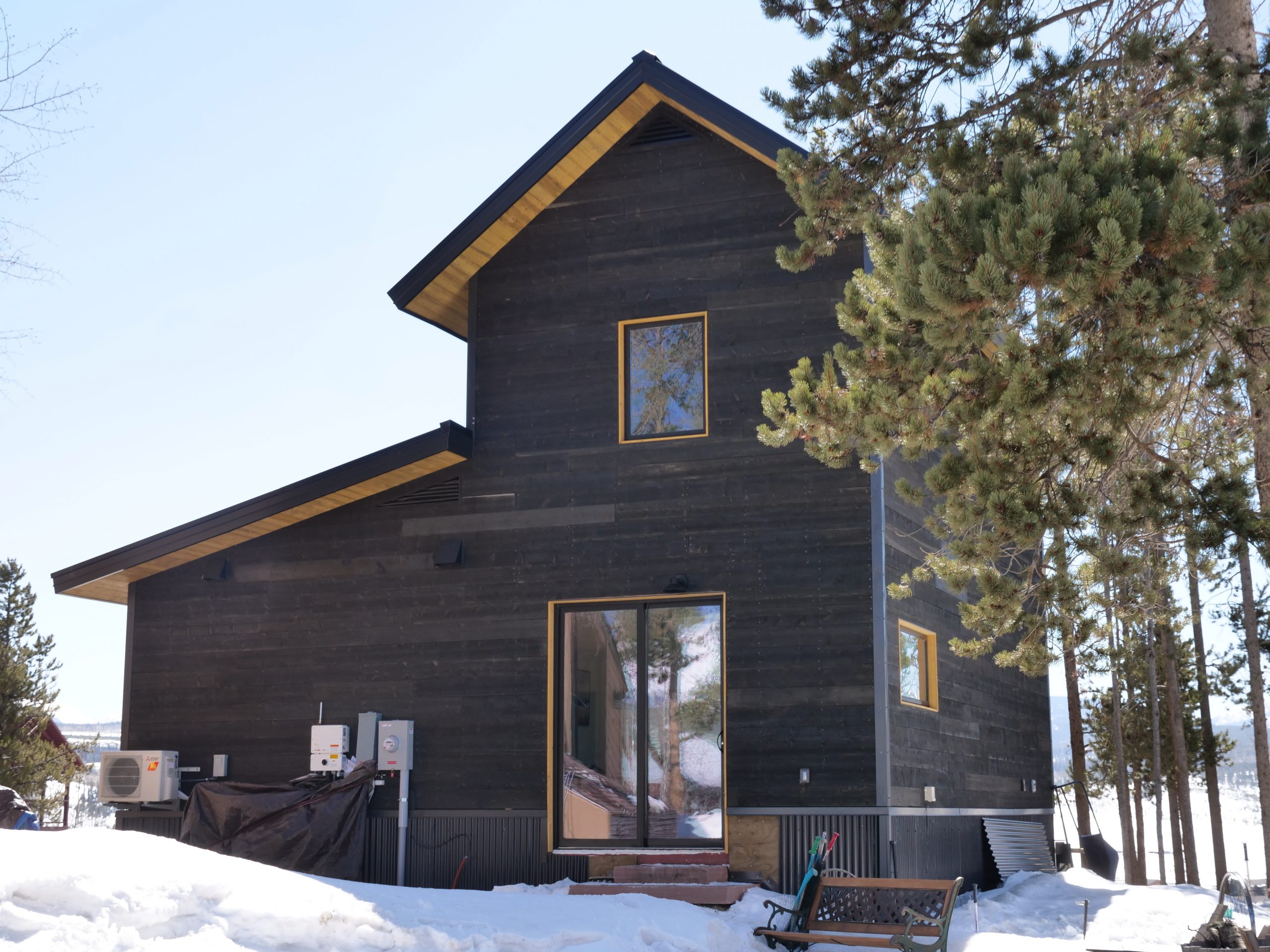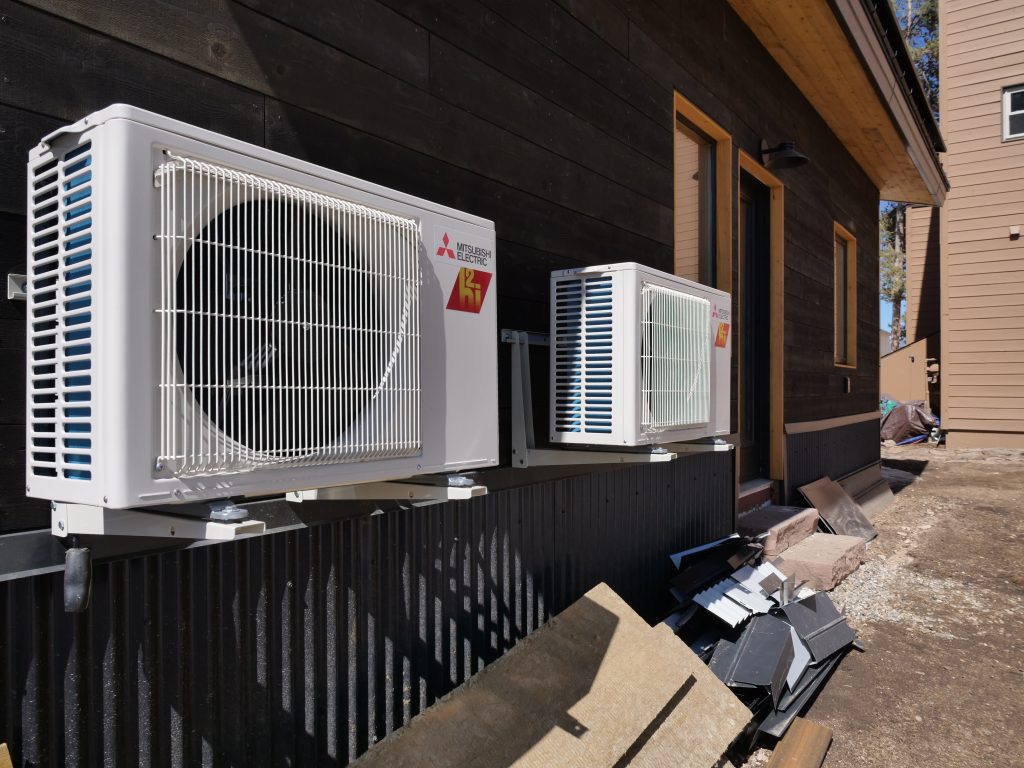
Without a well-timed bit of eavesdropping, Hannah Blake and Gabi Abello may have never built a home in Fraser, Colo., a mountain town just a few miles from the Winter Park Ski Area.
The moment came as the pair toured a traveling village from the Department of Energy’s Solar Decathlon in 2018. The competition challenges college students to build solar-powered houses. Inside the first building, the University of Colorado Boulder sophomores wondered aloud why no one from their school had organized a team.
Kristen Taddonio and Joe Smyth, a young couple from Fraser, overheard the students talking. It had always been their dream to live in a solar decathlon home.
“So I handed them my card and said well, if you ever do start a team and need a sponsor, let me know,” Taddonio said.
The chance encounter led to victory last week. Blake and Abello organized a new CU Boulder team, which hadn’t entered the competition since 2007. Their final home, dubbed the SPARC house, won the top prize for a design the students said demonstrated how developers could build affordable all-electric homes in mountain towns like Fraser.
A heated debate over housing
The plan also put the students at the center of a debate about the future of housing. As global warming heats up, many environmental advocates have pushed builders to abandon natural gas hookups in new construction. The idea is electric alternatives will help decrease greenhouse gas emissions over time. As more renewables are added to the grid, electric stoves, furnaces and water heaters only become more climate-friendly.
That’s why many cities, including Denver and Boulder, have pursued new building codes that favor electrical appliances in new construction. Some California communities have gone one step further by even banning natural gas hookups in new construction.
The strategy gets trickier in frigid mountain towns. Fraser, elevation 8,575 feet, has long competed for the title of “icebox of the nation” due to its cold temperatures. Winter temperatures often dip below negative 20 degrees Fahrenheit, so residents need lots of energy to keep warm.
Since natural gas is far cheaper than electricity per unit of energy, it’s a tempting option for home heat, especially since building costs are far higher in mountain towns. Blake said her team’s design attempts to show all those conditions don’t rule out all-electric homes.
“Not only is it possible, but it’s cost-effective, comfortable and healthy for the occupants,” she said.
The final SPARC House is just under 1,200 square feet. The exterior is sided with charred pine trees, which closely matches a black 7.6-kilowatt solar array across the south-facing rooftop. In the end, the land and construction cost about $440,000, which Smyth said is on the lower end of what the couple expected to pay.
To keep construction costs in check, the students partnered with Simple Homes, a construction outfit specializing in homes built from prefabricated panels. The company let the students put together the eight main pieces of the home inside its Denver factory. It then shipped the panels to Fraser, where assembly only took two days.
The students also attached a 300-square foot rental to the main living space, providing the couple with a potential side hustle.
Electrified comfort, but savings aren't guaranteed
The final cost-saving strategy came down to the home's state-of-the-art energy systems. Smyth and Taddonio, who moved into the home earlier this month, said the solar panels produce enough energy to nearly eliminate their monthly electricity bill. That's possible thanks to a range of super-efficient electrical appliances, none more important than a cold-weather heat pump system breathing warm air into the home.
During a virtual tour, Taddonio focused the camera on one of the indoor units.
“If you have an air conditioner, it’s moving heat around. It’s taking heat out of your home and it’s dumping it outside. What a heat pump does is that exact same thing in reverse,” Taddonio said.

Heat pump units are far more efficient than traditional electric resistance heaters. While the technology has existed for decades, recent improvements have made all-electric homes practical in colder parts of the country.
The system can also flip directions to cool the home in the winter.
A report published by the Rocky Mountain Institute, a clean energy think tank, assessed the building and energy costs of homes in seven U.S. cities and found all-electric homes offer a cheaper option. Amar Shah, one of the authors, said a big part of the savings come from reduced construction costs. Developers don’t need to pay for separate air conditioners and heating units. There’s also no need to pay for a natural gas hookup.
Whether the same findings apply in Fraser, Shah can’t be sure.
“I would fully acknowledge that it is dependent on the local rates, and it's also just dependent on the condition of the home,” said Shah.
The study also applied only to new construction, not retrofits of existing buildings. In Colorado, about 70 percent of homes rely on natural gas for home heating. Those buildings also aren’t nearly as insulated against the cold as the CU SPARC House, which has multiple layers of wool built into the walls.
Black Hills Energy, one of Colorado’s largest natural gas and power suppliers, recently commissioned an analysis on the impacts of electrification in homes. It found the typical Colorado home using natural gas would see energy bills more than double if it switched completely to electric power. Solar panels can help offset those extra costs, but energy production drops during the winter months due to shorter days and snow cover.
The ubiquity of gas heaters also protects Colorado from winter electricity demand spikes. That’s not the case in Texas, where a cold snap caused large portions of the power grid to fail last winter.
On top of those big-picture warnings, the Black Hills analysis also equates natural gas heat with a certain level of indoor comfort. That's because traditional gas furnaces tend to deliver warmer air into homes than heat pump systems.
Smyth and Taddonio, who have now spent over a week living inside the SPARC house, said they can attest the home keeps them plenty cozy, even on the coldest days in the Fraser Valley. In the morning, Taddonio said she drinks her coffee under one of the heat pump vents.
“I can feel that warm, quiet air blowing on me,” she said. “It’s wonderful.”
- Commerce City Nonprofit Wins Suncor Energy Fine Money, Will Use It To Monitor Suncor Energy
- The Southern Ute Reservation Could Get A Zero-Emission Power Plant That Runs On Fossil Fuels (Yes, You Read That Right)
- These Little Devices On Oil Fields Make A Lot Of Emissions. New Regulations Could Change That








